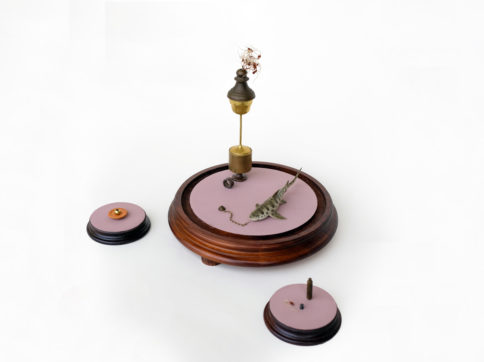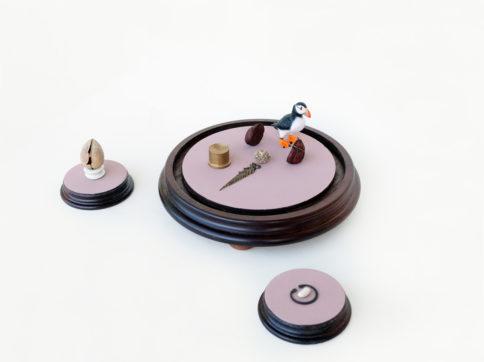Doppelgänger, etymologically “the double who passes”, is a German word depicting the concept of the double, or the fleeting perception that sometimes one has in grasping his own image passing by; a tangible “spirit double”, having the same memories and feelings as the person to whom the counterpart belongs.
It is no coincidence that this vertigo has been interpreted by folklore as ‘harbinger of death’, counting among the witnesses of this interpretation personalities such as the English poets Shelley, Donne, and also before Marco Giunio Bruto, Caesar’s adopted son.
In taking up this theme, the diorama elects as a privileged subject of his own research Time, once again unbearable as the memory one, but equally metaphysical if conceived as a background of the encounter with the identical, sign of an omen. Which one?
This is the question diorama poses, rattling off the clues within its forms, always symbolic therefore always speaking, hieroglyphic revealing a coherent narrative on the scope of the concept of Doppelgänger.
The work is therefore centered on the essence of the ‘double’, of the Other as Identical but Hidden, the other of us (still us) that peeps to consign a precise message.
The animal doubles itself, as well as the indexes now placed at the side of composition like mirroring islands; the circular base recalls the Greek concept of time, καιρός: “the right, supreme moment”, while all the elements of the composition deal with the duality and its evolutions. Hence the essentially descriptive and tactical character of the work titles, borrowed from the chess terminology, which suggest the strategic and narrative point in which the artist and the viewer find themselves aligned. Through the medium of the diorama, through its objects, animals and their disposition, through miniated representations of the mystery and the reflexion on it, we are lead to the match moment between us and the Doppelgänger’s understanding.






